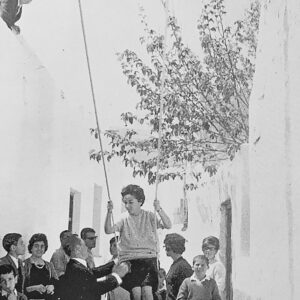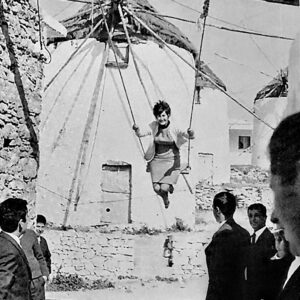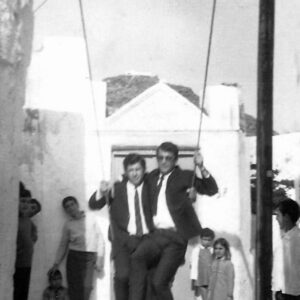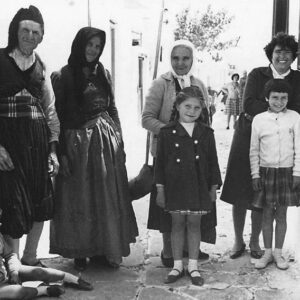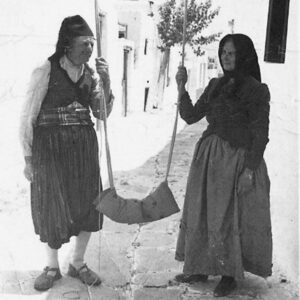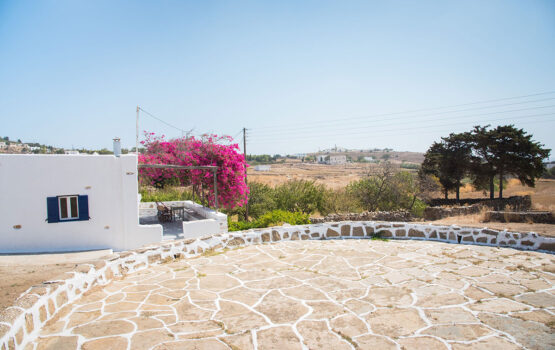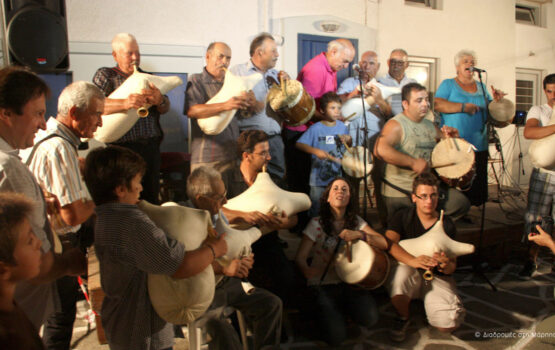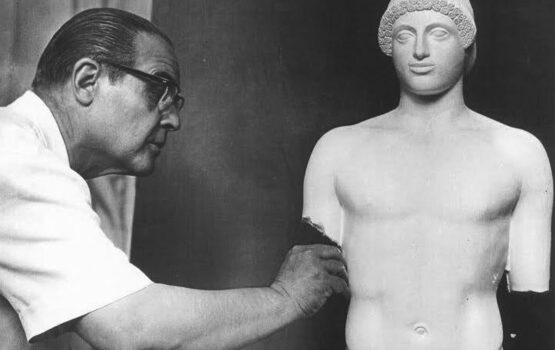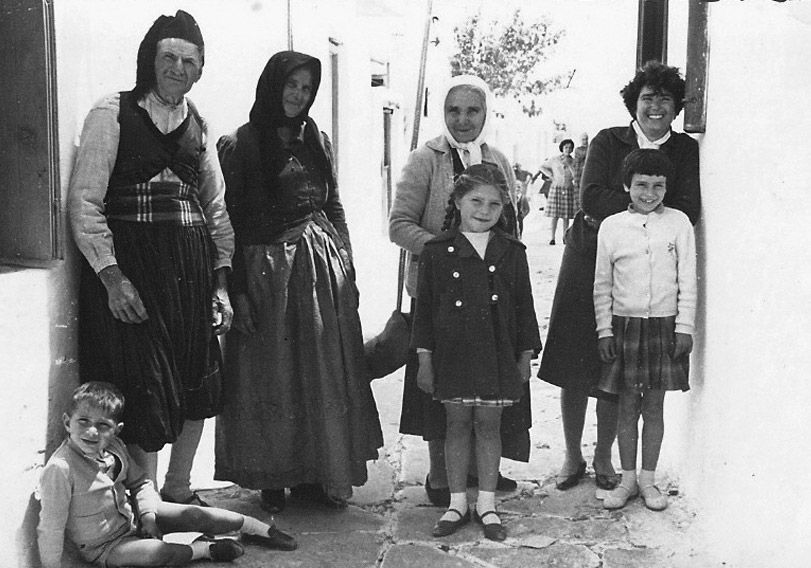
The custom of the “swing” in Marpissa
The custom of the “swing” has its origins in ancient Greece, as it specifically refers to the “hammock” of girls during the Anthesteria springtime celebrations, held to honour the god Dionysus. The feeling of freedom given by the movement of the swing towards the sky was believed to bring good luck. That is why the swing going up symbolises the rebirth of nature with the coming of Spring (Serpioti, 2019). Rooted in the ancient custom of the hammock, the spring custom of the swing is popular across Greece, mainly in island areas of the Aegean and of course in the Cyclades. It is part of Easter festivities and is one of the most vivid and cherished memories of the islands’ inhabitants.
In Marpissa of Paros, on Easter day and up to Ascension Thursday, the encounters took place outside the houses. The young people of the village made improvised swings and set them up mainly in three points of the village. The accounts of locals reveal more: at Lagkadiani, near Agios Efstathios church, in the alley from the square of the Myloi to the Church of Christ, in the alley from the Mills to Ai Giorgis church.
A sturdy beam was balanced on the roofs of two nearby houses in the narrow alleys of Marpissa and from there tropes were hung. Kyriaki Ragousi-Kontogiorgou (2004, p. 412) states that “in Marpissa, young people collected money for the beam and the rope, which they weaved with cloths at the edges so that they would not fray.
“May the rope be iron and the beam be steel
and he who tied it may he live to tie another”.
Unmarried girls usually sat in the swing and the boys pushed them. During these days the young people were protagonists, they found the opportunity to choose their spouse-to-be and to express themselves mutually and in public. Boys were looking for the village swing of the girl they were interested in, to swing her and talk to her using love couplets. Mrs Flora Anousaki sings to us in the video:
“Swing the lovely, swing the white
swing the lemon tree that is full of flowers…”
Grandmother Giakoumina Fysilani remembers and narrates to Kyriaki Ragousi-Kontogiorgou (2004, p.412) what the girls would answer back:
“Thank you for swinging me, I owe you a favour
I will weave your crown all with pearls”.
Song
I want to go up, to the roof of Ai Giorgis,
to look for my little bird, to check if it’s still sailing.
It sailed and went before the door of the king
And the king was sitting there with three princesses
One princess embroiders the sky and the other the moon
and the third, the youngest, embroiders the lad.
Flora Anousaki, Nikos Tsigonias, Spyros Tsigonias – Marpissa, 2012
Sources
Archives of the Association “Routes in Marpissa”.
Ragousi – Kontogiorgou, K. (2004) Πάρος και Αντίπαρος: το εικονοστάσι της ψυχής μου (Paros and Antiparos: the icon stand of my soul). Paros: Anthemion.
Serpioti, N. (2019) «Από την αρχαιότητα… στη λαογραφία ~ «Οι κούνιες της άνοιξης», ένα έθιμο του Πάσχα», From antiquity… to folklore ~ the swings of spring” Ταχυδρόμος, 30 April. Available at www.taxydromos.gr [01/12/2020].
Fragkouli, D. Δ. (2009) Ρίζες Ελλήνων Ανθρωπογεωγραφία της Ελλάδας, Νησιώτες: Νότιο Αιγαίο (Roots of Greeks- Human Geography of Greece, Islanders: the South Aegean). Athens: Pigasos Ekdotiki S.A.
Special thanks to Flora Anousaki, Nikos Tsigonias, Spyros Tsigonias for their assistance and valuable information.

